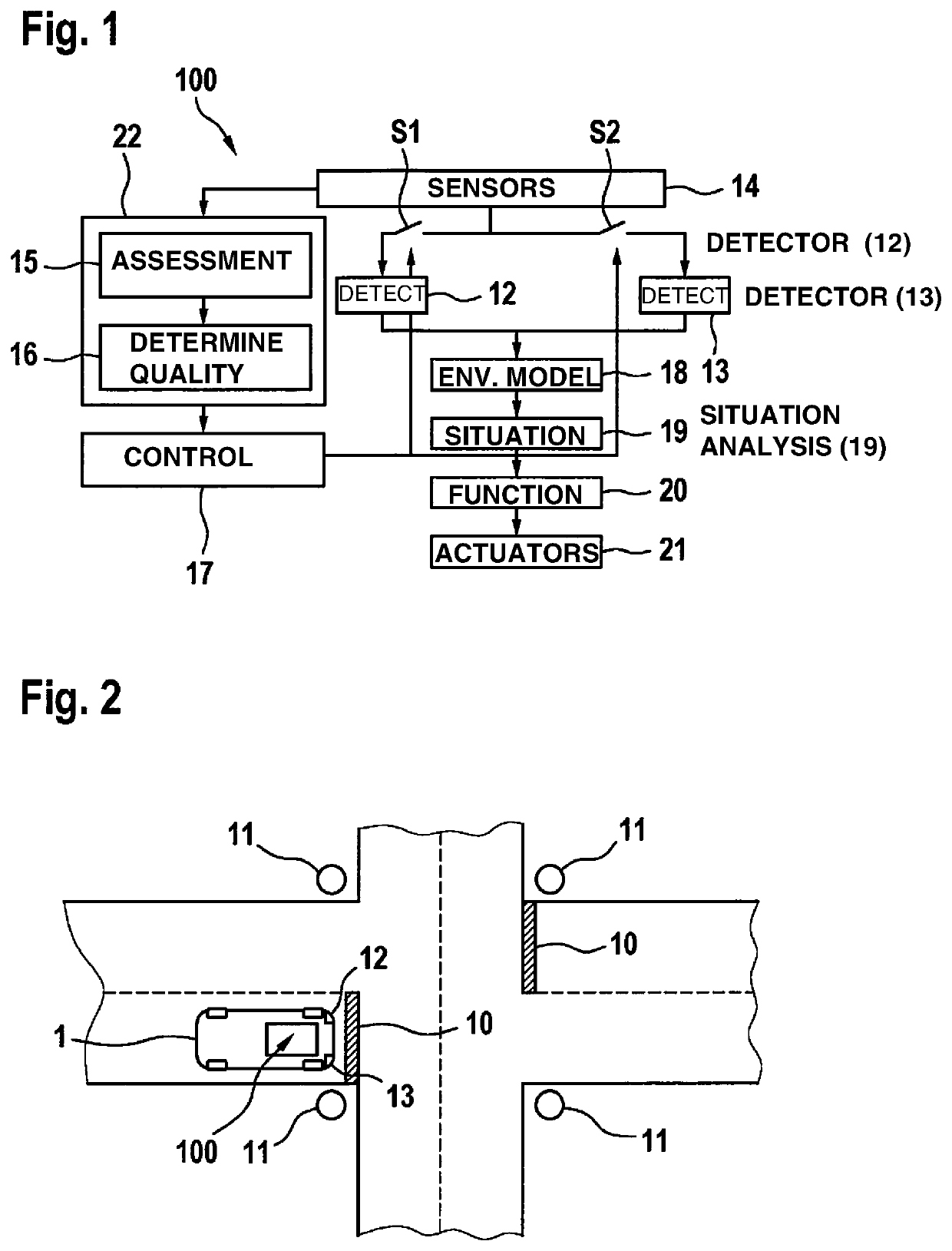Method for determining a pose of a vehicle driving in an at least partially automated manner, using different landmark types
a technology of at least partially automated vehicles and landmark types, applied in the direction of navigation instruments, instruments, process and machine control, etc., can solve the problems of not always being able to reliably model the immediate environment with physical objects in the immediate environment, unable to activate corresponding detectors, and no longer being able to guide vehicles in pure gps navigation. , to achieve the effect of reducing the amount of data to be processed and the need for processing power
- Summary
- Abstract
- Description
- Claims
- Application Information
AI Technical Summary
Benefits of technology
Problems solved by technology
Method used
Image
Examples
Embodiment Construction
[0018]FIG. 1 shows a vehicle control system 100 with a detailed illustration of individual components. As an essential component for processing the detector algorithms, vehicle control system includes a relevance assessment 22, which carries out two essential steps of the present method. To begin with, the sensor system 14 uses sensors to provide an assessment 15 of the environmental influences, i.e. the weather and the illumination conditions, for example, takes place. Assessment 15 is followed by a quality determination 16 for the purpose of determining the quality of different landmark detectors. Finally, relevance assessment 22 supplies to a control module 17 for the detector switchover a decision as to which detectors are to be used for detecting allocated landmark types.
[0019]Shown by way of example are two detectors 12 and 13, and a switch 51 for activating detector 12 is shown, switch S2 being used for activating detector 13. Switches 51 and S2 are able to be actuated by con...
PUM
 Login to View More
Login to View More Abstract
Description
Claims
Application Information
 Login to View More
Login to View More - R&D
- Intellectual Property
- Life Sciences
- Materials
- Tech Scout
- Unparalleled Data Quality
- Higher Quality Content
- 60% Fewer Hallucinations
Browse by: Latest US Patents, China's latest patents, Technical Efficacy Thesaurus, Application Domain, Technology Topic, Popular Technical Reports.
© 2025 PatSnap. All rights reserved.Legal|Privacy policy|Modern Slavery Act Transparency Statement|Sitemap|About US| Contact US: help@patsnap.com

